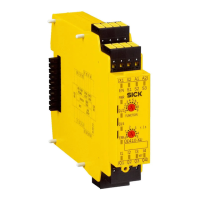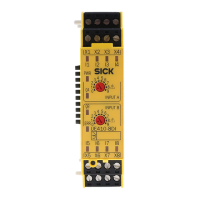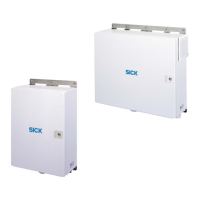Chapter 8 Operating Instructions
Flexi Classic Gateways
74 © SICK AG • Industrial Safety Systems • Germany • All rights reserved 8011834/YT28/2016-03-15
Subject to change without notice
Ethernet TCP/IP Gateway
8.3 Configuration of the TCP/IP interface — who
establishes the connection
The UE410-EN supports a total number of four TCP/IP socket interfaces. This allows up to
f
our different applications to communicate with the UE410-EN at the same time over
Ethernet TCP/IP. Other UE410-EN network interfaces (e.g. Modbus/TCP or EtherNet/IP)
run in parallel and their configuration or usage does not interact with the TCP/IP socket
configuration as well as it happens independently on separate web pages.
The UE410-EN processes the data of a Flexi Classic system and makes it available in diffe-
rent compilations, the data sets. These data sets are available over the TCP/IP interface.
For a detailed description of the data sets please refer to section “Description of the data
sets” below.
Through the TCP/IP socket interface data set 6 will always be returned with the maximum
length of 124 bytes even though it may have been compiled to be less for the Modbus/-
TCP interface.
Open a web browser on a PC in the network and go to the address of the UE410-EN.
Click Ethernet TCP/IP Interface Configuration on the UE410-EN homepage. The
following web page is displayed:
The page shows the current settings of the Ethernet TCP/IP Interface.
The default configuration for each socket interface allows an application running on
another computer to connect to the UE410-EN module and send request messages. No
automatic updates are configured in the default configuration (Polling Mode).
If the default configuration is acceptable for the user application, then the application
can connect to any of the socket interfaces and begin sending command messages and
receiving responses.
To change the Listen Port, have the UE410-EN module connect to your application, or
enable the Auto Update Mode for any or all data sets, please follow the configuration
steps below.
Note

